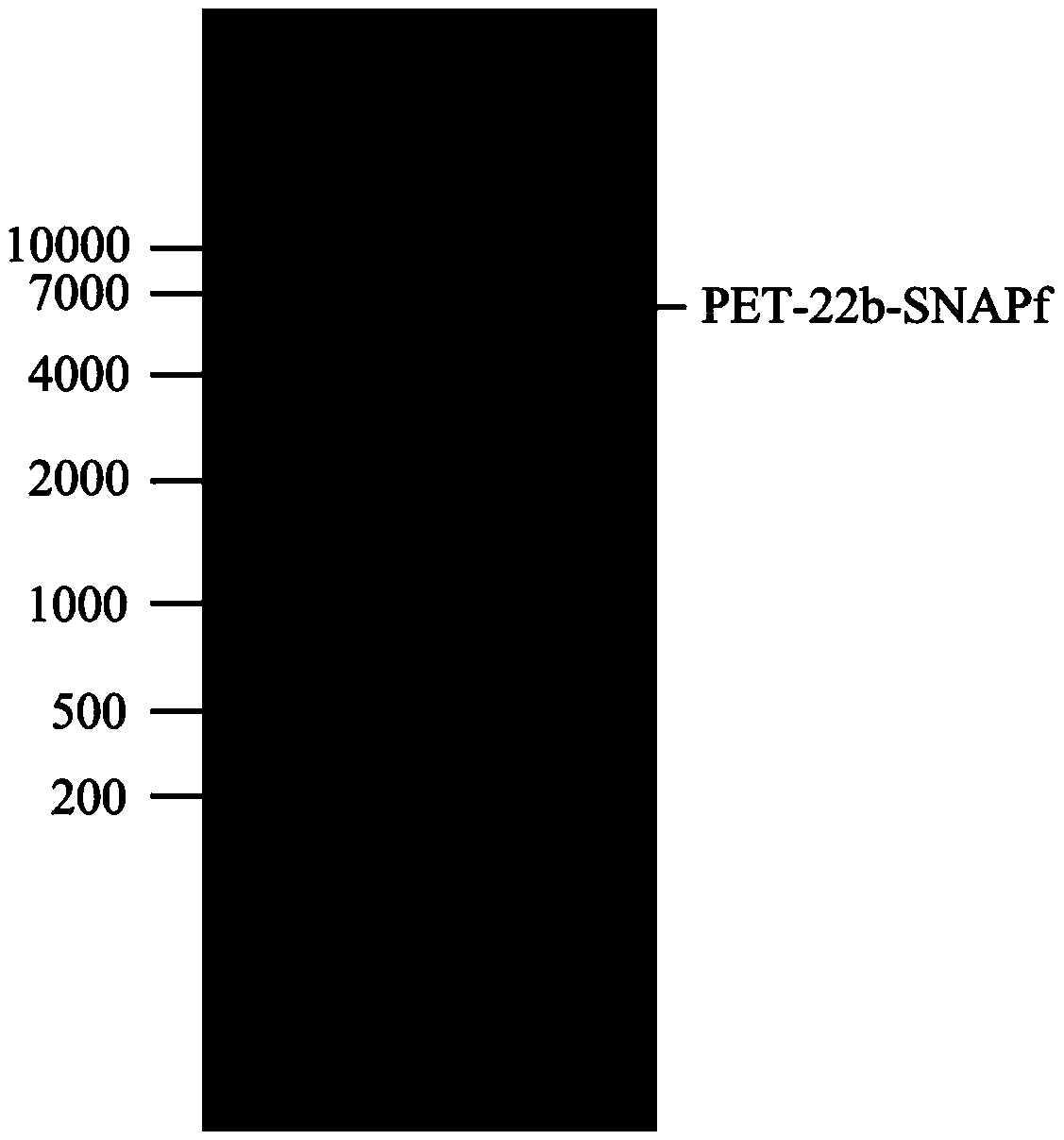Annexin V fluorescent labeling method for detecting early apoptosis of cells
A technology of fluorescent labeling and labeling methods, applied in chemical instruments and methods, biochemical equipment and methods, and fusion with spectrum/fluorescence detection, etc., can solve the problems of size affecting AnnexinV activity, application limitations, and poor photostability of fluorescent proteins
- Summary
- Abstract
- Description
- Claims
- Application Information
AI Technical Summary
Problems solved by technology
Method used
Image
Examples
Embodiment 1
[0036] (1) Acquisition of Annexin V target gene:
[0037] Primer design: Design the upstream and downstream primers of the Annexin V target fragment and introduce the Nhe1 restriction site (GCTAGC), and introduce the protective bases TACTA and ACTA in the upstream of the restriction site. The primers are as follows:
[0038] Upstream primer 5’TACTAGCTAGCATGGCACAGG TTCTCAGAGG 3’
[0039] Downstream primer 5’ACTAGCTAGCGTCATCTTCT CCACAGAGCA G 3’
[0040] PCR amplification of Annexin V target gene: PCR reaction system 50μL: PCR buffer (10×) 5μL; dNTP (10×) 5μL; pCMV-Annexin V 1μL; upstream and downstream primers (20nM) each 1μL; pfu DNA polymerase 0.5μL; 36.5μL of sterilized double distilled water. The PCR reaction conditions were as follows: 95°C 30sec; [95°C 30sec; 56°C 1min; 68°C 4min;] 25 cycles; 68°C 3min; 4°C incubation. After PCR, run 0.8% agarose nucleic acid electrophoresis, use PCR purification kit to purify the target fragment, use NheI restriction enzyme digestion to expose ...
Embodiment 5
[0054] Fluorescence imaging experiment of the SNAP-DAC fluorescently labeled SNAP-Annexin V fusion protein prepared in Example 5 on early apoptotic cells
[0055] SNAP-DAC fluorescently labeled SNAP-Annexin V fusion protein was prepared into a 2μM mother solution for later use.
[0056] Spread Hela cells (proliferating epidermal cancer cells) in a petri dish. The dish contains 1 mL of DMED high glucose medium containing 10% fetal bovine serum, and culture it at 37°C and 5% carbon dioxide until the cell density is about 40%. Replace Fresh culture medium containing 50μg / mL cell apoptosis inducer NCTD was cultured for 12 hours. Then wash 2 times with PBS and add 2mM CaCl 2 And 0.1μM SNAP-DAC fluorescently labeled SNAP-Annexin V fusion protein, detected under 488nm excitation Figure 5 .
[0057] The fluorescence imaging image of SNAP-Annexin V fusion protein on early apoptotic cells is as follows Figure 5 Shown: Figure 5 -a is bright-field Hela cell imaging, Figure 5 -b is fluoresce...
Embodiment 3
[0059] Fluorescence imaging experiment of SNAP-Cell 505-Star fluorescently labeled SNAP-Annexin V fusion protein prepared in Example 5 on early apoptotic cells
[0060] Place Hela cells (proliferating epidermal cancer cells) in a petri dish. The dish contains 1 mL of DMED high-glycemic medium containing 10% fetal bovine serum, and culture it at 37°C and 5% carbon dioxide until the cell density is about 50%. Replace Fresh culture medium containing 50μg / mL cell apoptosis inducer NCTD was cultured for 12 hours. Then wash 2 times with PBS and add 2mM CaCl 2 And 0.1μM SNAP-Cell 505-Star fluorescently labeled SNAP-Annexin V fusion protein, and perform fluorescence imaging under 488nm excitation. Get with Figure 5 Similar HeLa cell imaging proved the effect of SNAP-Cell 505-Star fluorescently labeled SNAP-Annexin V fusion protein on early apoptosis cells.
PUM
| Property | Measurement | Unit |
|---|---|---|
| Molecular weight | aaaaa | aaaaa |
| Molecular weight | aaaaa | aaaaa |
Abstract
Description
Claims
Application Information
 Login to View More
Login to View More - R&D
- Intellectual Property
- Life Sciences
- Materials
- Tech Scout
- Unparalleled Data Quality
- Higher Quality Content
- 60% Fewer Hallucinations
Browse by: Latest US Patents, China's latest patents, Technical Efficacy Thesaurus, Application Domain, Technology Topic, Popular Technical Reports.
© 2025 PatSnap. All rights reserved.Legal|Privacy policy|Modern Slavery Act Transparency Statement|Sitemap|About US| Contact US: help@patsnap.com



